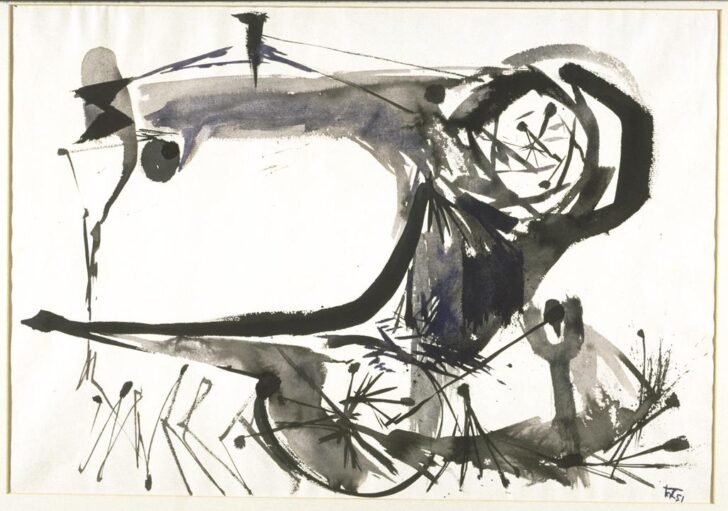Study for Sewing Machine
Hann Trier

Description
Born in Kaiserwerth, Germany, Hann Trier studied at the Kunstakademie in Düsseldorf. During this time he became a friend of both Joseph Fassbender and Hans Hartung, important figures in Trier’s artistic development. After finishing his studies, he was drafted into the German military and did part of his service in Berlin as a technical draughtsman. Inspired by American Abstract Expressionism, he began to produce his first abstracted paintings in 1949. Trier was also an important teacher, counting Georg Baselitz and Elvira Bach among his students.
Study for Sewing Machine is one side of a double-sided work. Both conceived as studies, these works nonetheless give a good idea of the power of Trier’s abstracted works. Study for Sewing Machine shows not only the basic form of the machine but also a sense of its dynamic energy. The power of Trier’s lines expresses the movement and operation of the machine. Many of Trier’s strokes are almost calligraphic and express more than just the surface appearance of the object and its parts.
Sean M. Ulmer, University Curator of Modern and Contemporary Art, for "A Matter of Degree: Abstraction in Twentieth-Century Art," November 10, 2001 - January 27, 2002
Usage Rights:
If you are interested in using an image for a publication, please visit https://umma.umich.edu/request-image/ for more information and to fill out the online Image Rights and Reproductions Request Form.